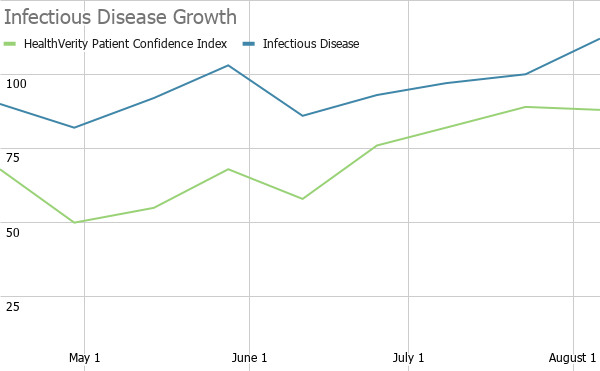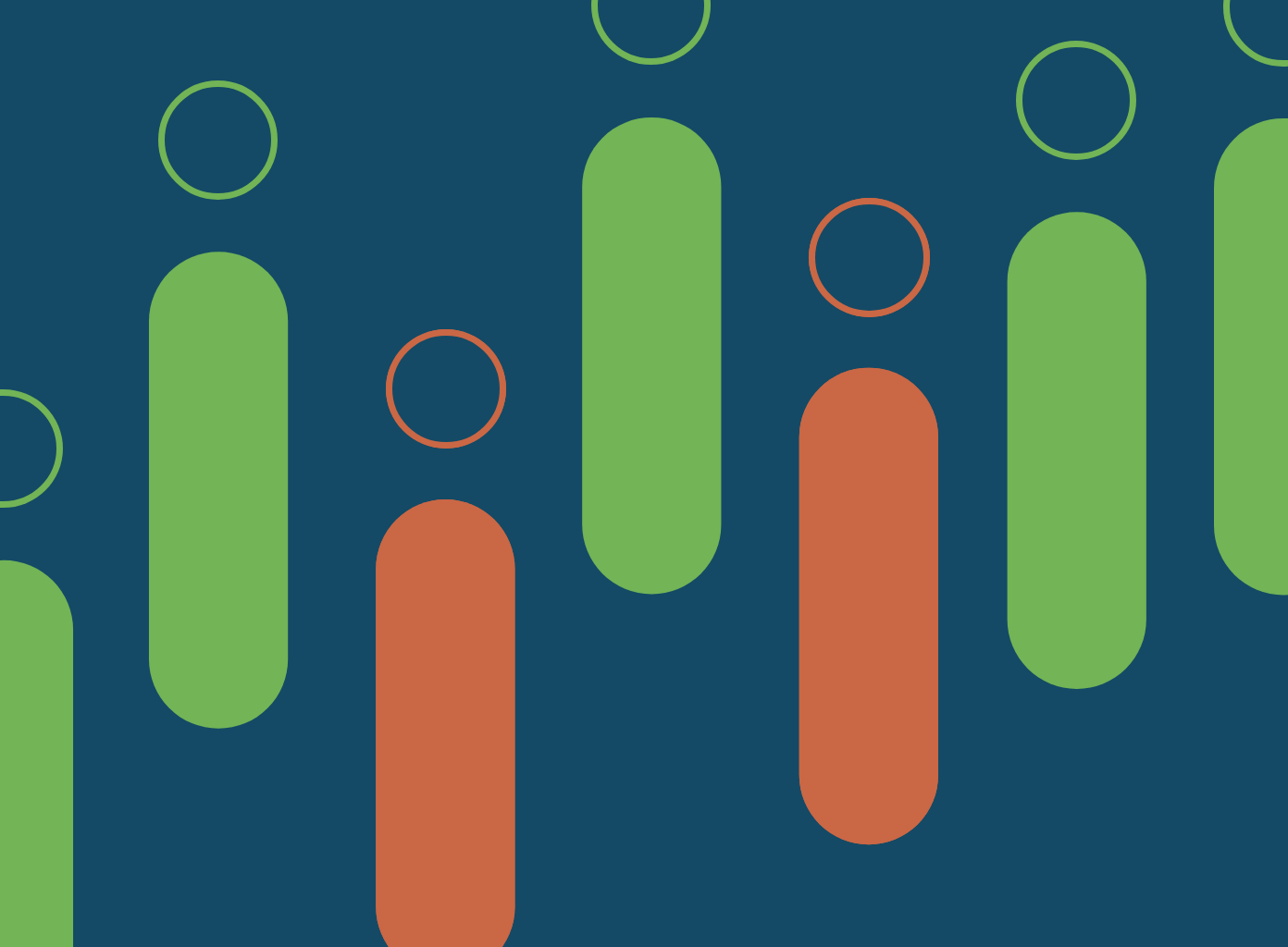August 6, 2020 - Philadelphia, PA - HealthVerity announced the biweekly update to its HealthVerity Patient Confidence Index, or HVPCI, and reported a national score of 88, a one point decrease from the previous period. For the second time since the inception of the index and onset of COVID-19 in March 2020, the index remains at a “Stable” level, reflecting consistent patient engagement across the US healthcare system.
.png?width=600&name=COVID-19%2088%20(1).png)
The HVPCI represents a measure of physician visits undertaken by non-COVID-19 patients across 20 key therapeutic areas, highlighting a significant decline in visits since the pandemic took hold in the US at the beginning of March. The HVPCI is crucial as an expression of the confidence in patients to seek care for acute and chronic illnesses balanced with the risk of exposure to the coronavirus in a public setting. As coronavirus cases peak and eventually subside, this indicator will ultimately serve as an overall measure of US patient engagement between patients and their physicians.
This week’s national score of 88, or Stable, marks the second published score within this indexed range. Against a pre-pandemic score of 100, patient engagement, both traditional visits and telehealth visits, seems to be holding at a steady level, yet still notably below what was reported during this period in 2019. With only a one point overall decrease from the prior index in July, 85% of physician specialties included in the index demonstrated a five point or less swing in either direction. This indicates the continued confidence in patients to seek treatment as hospitals and other healthcare facilities reopen to non-critical visits and surgeries.
Infectious disease, one of the key areas tracked for the HVPCI, was an outlier versus other specialties. For the second consecutive period, infectious disease exceeded 100 and generated the highest score reported for any specialty since the inception of the HVPCI at 112. Although this result denotes a confidence in patients to visit their doctors amidst the COVID-19 pandemic, it also reflects the corresponding need for increased care as officials announced that the U.S. surpassed 4 million cases. Until now, the HVPCI had not recorded visits in 2020 for any given specialty that eclipsed their respective 2019 volumes.

According to an article in USA Today, “There's more COVID-19 testing than ever, it's created a bottleneck for labs and states bidding against each other for limited supplies. Experts said many tests become irrelevant after delayed results and increase the chance of the virus spread.” The sizable increase in patient visits within Infectious Disease may be a direct result of delayed testing results and an unfortunate surge in cases.
As mentioned earlier, 85% of tracked specialties or 17 of 20 reported similar scores (less than five point difference) from the previous index, with preventive medicine (93, +0), pediatrics (87, +1), psychology and neuroscience (72, -1) and rheumatology (94, +1) moving one point or less. Cardiology (88, +5), endocrinology (90, +2), infectious disease(112, +12), otolaryngology (94, +6) and pulmonology (77, +3) have all recorded increased numbers of patient visits for the last five weeks, possibly signaling a trend in line with the rise in COVID-19 cases due to the easing of restrictions and return to work for many across the US. Behavioral health (66, -3) saw another slight dip and remains the only speciality in the HVPCI under 70.
.png?width=700&name=Blog%20Inset%20-%2020-07-23%20Patient%20Confidence%20Index%20Social%20(1).png)
“Since the beginning of June, the HVPCI has been trending upwards, gradually approaching pre-pandemic levels,” said Andrew Goldberg, chief operating officer at HealthVerity. “When we decided to measure the confidence in patients, we were technically evaluating the health of the US healthcare system. Now, we are seeing the index reflect two parallel realities: one of suppressed, but stable in-person engagement and one of concerning growth around infectious disease. Even with restrictions in place at physician offices and extended waiting times, patients are having to seek care in areas such as infectious disease and pulmonology that have historically experienced significant drops in visits at this time of year.”
Telehealth accounted for 9.9% of all physician visits in the data supporting the index, the sixth straight period of declining share. With telehealth visits hovering around 10% for the past five weeks, this new baseline will remain an important area to track as the summer season ends.
Learn more about HealthVerity’s efforts to educate and inform on COVID-19 here.





